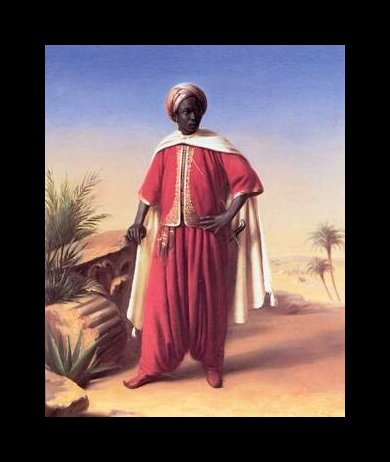Emile-Jean-Horace Vernet (1789-1863)
Get a Emile-Jean-Horace Vernet (1789-1863) Certificate of Authenticity for your painting (COA) for your Emile-Jean-Horace Vernet (1789-1863) drawing.
For all your Emile-Jean-Horace Vernet (1789-1863) artworks you need a Certificate of Authenticity (COA) in order to sell, to insure or to donate for a tax deduction.
Getting a Emile-Jean-Horace Vernet (1789-1863) Certificate of Authenticity (COA) is easy. Just send us photos and dimensions and tell us what you know about the origin or history of your Emile-Jean-Horace Vernet (1789-1863) painting or drawing.
If you want to sell your Emile-Jean-Horace Vernet (1789-1863) painting or drawing use our selling services. We offer Emile-Jean-Horace Vernet (1789-1863) selling help, selling advice, private treaty sales and full brokerage.
We have been authenticating Emile-Jean-Horace Vernet (1789-1863) and issuing certificates of authenticity since 2002. We are recognized Emile-Jean-Horace Vernet (1789-1863) experts and Emile-Jean-Horace Vernet (1789-1863) certified appraisers. We issue COAs and appraisals for all Emile-Jean-Horace Vernet (1789-1863) artworks.
Our Emile-Jean-Horace Vernet (1789-1863) paintings and drawings authentications are accepted and respected worldwide.
Each COA is backed by in-depth research and analysis authentication reports.
The Emile-Jean-Horace Vernet (1789-1863) certificates of authenticity we issue are based on solid, reliable and fully referenced art investigations, authentication research, analytical work and forensic studies.
We are available to examine your Emile-Jean-Horace Vernet (1789-1863) painting or drawing anywhere in the world.
You will generally receive your certificates of authenticity and authentication report within two weeks. Some complicated cases with difficult to research Emile-Jean-Horace Vernet (1789-1863) paintings or drawings take longer.
Our clients include Emile-Jean-Horace Vernet (1789-1863) collectors, investors, tax authorities, insurance adjusters, appraisers, valuers, auctioneers, Federal agencies and many law firms.
We perform Emile-Jean-Horace Vernet art authentication, appraisal, certificates of authenticity (COA), analysis, research, scientific tests, full art authentications. We will help you sell your Emile-Jean-Horace Vernet or we will sell it for you.
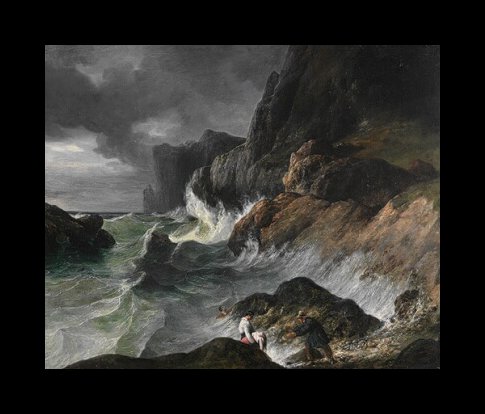
Emile-Jean-Horace Vernet came from a long line of distinguished painters, and was born in his family’s apartments in the Louvre. His Grandfather was the marine painter, Claude-Joseph Vernet, and his Father was Carle Vernet, who specialised in historical and biblical scenes. He received his artistic training at home, and this was supplemented by extra tuition from Francois Vincent.
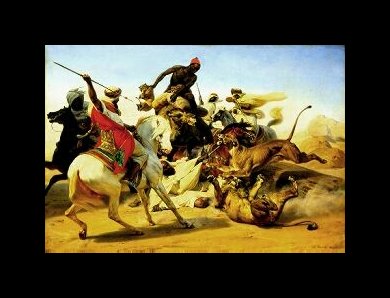
Throughout his artistic career, Vernet was to cover a wide range of subjects, including Oriental genre scenes, battle scenes and scenes from the bible, and literature. He also made illustrations for books, and journals. He was a prolific traveler, and he made his first trip to Algeria in 1833, with the French army. He was to return there on numerous occasions, and used these trips as inspiration for his Oriental paintings. He was particularly interested in the similarity of Arab costumes, and those worn in biblical times.
In his painting, ‘The First Mass in Kablyia’, he depicts the mass celebrated in the Kablyia mountain range, in June 1854, to mark the anniversary of the French landing in Algeria, and the submission of the native tribes. In this painting we see Catholic priests on an altar celebrating mass, with Oriental soldiers in the foreground kneeling on the ground. In fact, Vernet participated in this mass, and helped construct the altar. Throughout his whole career he was to have an interest in Oriental scenes, and the Wallace Collection in London has an enormous number of his paintings in this style, including, ‘Arabs Traveling in the Desert’, and ‘Arab Tale Teller’.
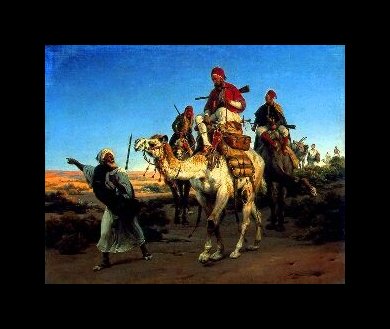
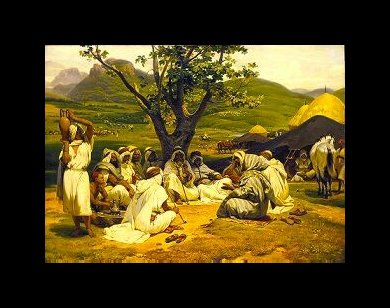
He was also well known for his battle scenes, and many of these were bought by the Duc d’Orleans for the Palais Royale. A particularly well known battle scene of his is, ‘The Battle of Somah’, which commemorates the actions of General Charngarnier at the Battle of Somah. This battle was one of the most important battles of the French colonial wars in Northern Africa. The painting shows General Charngarnier rising above the surrounding carnage, calm in the face of impending death. The painting was commissioned by the General Charngarnier’s native town of Autun.
He used these paintings of battle scenes to allow him to portray Oriental costumes, and weapons, in which he had a great interest. The great Oriental painter, Eugene Delacroix was also an admirer of his work, and often made reference to Vernet’s remarkable ease of composition.
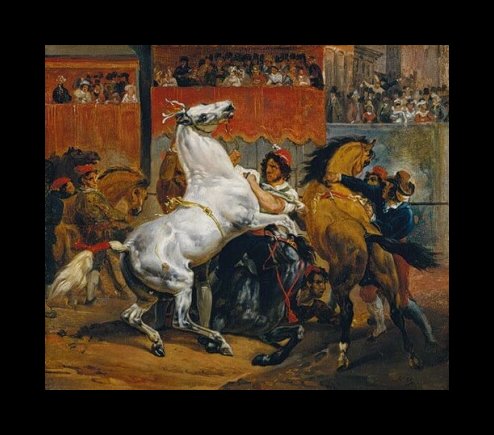
He received notoriety in 1822, when a number of his paintings were apparently rejected by the Salon due to his anti-Bourbon sentiments. Whether this is true or not is debatable, as he went on to receive a number of honours from the restored Bourbon Monarchy, including the Directorship of the French Academy in Rome, which he retained until 1834.
He was also commissioned by King Louis Philippe, to help with the decoration of the Galleries des Batailles in Versailles. This was one of the most grandiose projects that Vernet ever undertook.
Together with his nephew, Frederic Goupil-Fesquet, he was one of the first Oriental travelers to make use of the daguerreotype, and in November 1839, he recorded views of Alexandria, Cairo and Jerusalem, only some months after the process had been made public.
Paintings by Vernet can be seen in the Wallace Collection in London, the Hermitage Museum in St. Petersburg, and the Metropolitan Museum in New York City, to name just a few.
